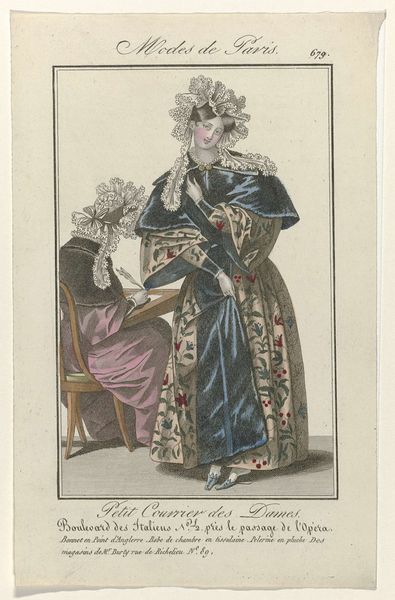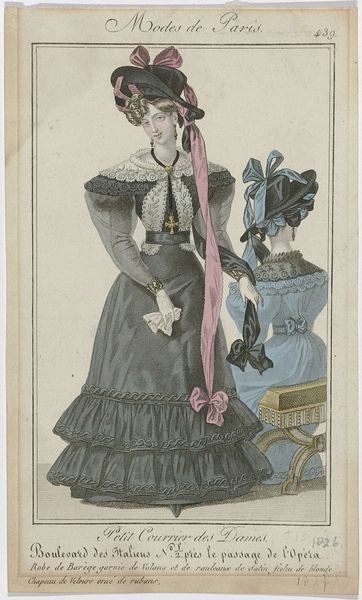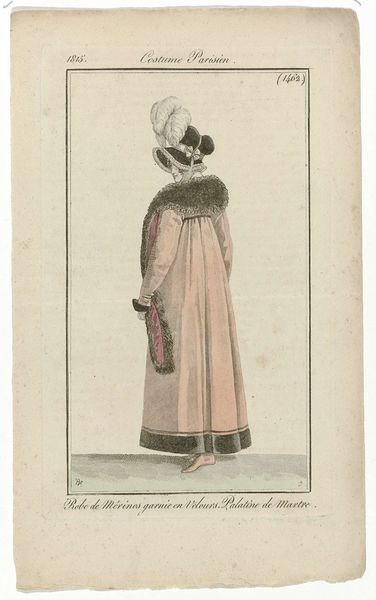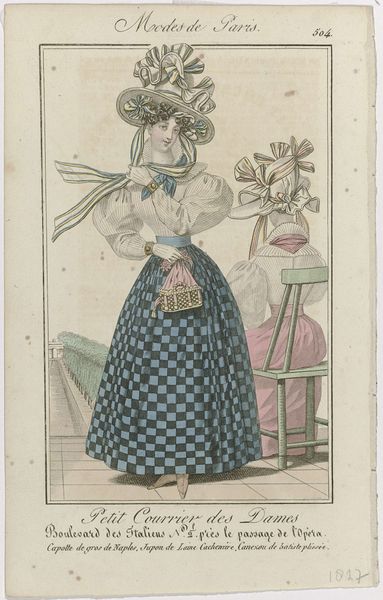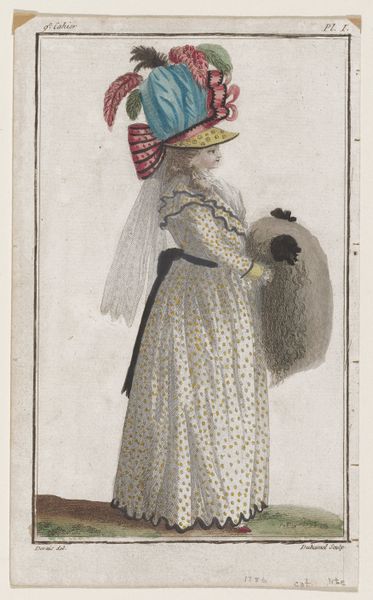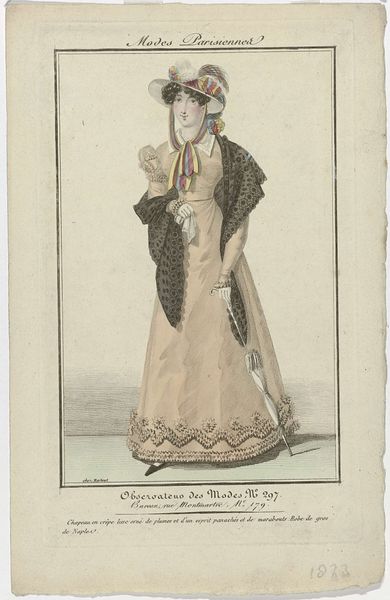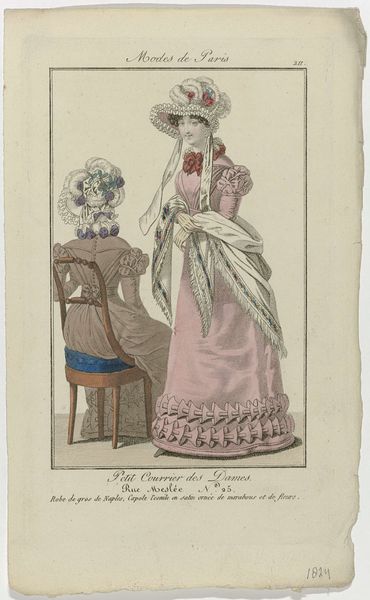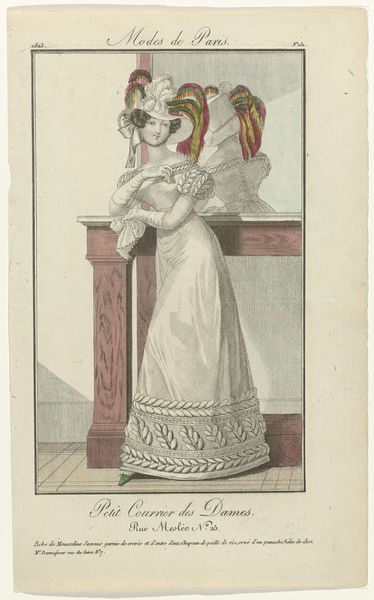
watercolor
#
toned paper
#
caricature
#
figuration
#
watercolor
#
romanticism
#
watercolour illustration
#
dress
#
watercolor
Dimensions: height 194 mm, width 117 mm
Copyright: Rijks Museum: Open Domain
Editor: This watercolor illustration, “Petit Courrier des Dames, 1823, No. 175” from an anonymous artist, seems like a glimpse into Parisian fashion of the time. The attention to detail in the dress is amazing. How would you interpret this work? Curator: I see a fascinating artifact rooted in the socio-economic landscape of 1823. Consider the material properties: silk robe, satin lining, velvet trim. These weren’t just aesthetic choices; they represented considerable wealth and the skilled labor involved in their production. The *Petit Courrier des Dames* itself functioned as a commodity, fueling desire and dictating the consumption habits of the elite. What kind of social structure makes this form of advertisement possible? Editor: So, it’s less about the beauty of the dress itself and more about what the materials reveal about society? The text beneath seems almost like a purchase order of available items, if one had access to the appropriate funds and the artisans who could produce them? Curator: Exactly. Look at the ‘Modes de Paris’ title. This wasn't merely about clothing; it was about establishing Paris as the epicenter of taste, driving industry and reinforcing a hierarchy between producer and consumer. The watercolor itself – consider its materiality as well, pigments, paper – it speaks to a chain of production. Editor: It makes me rethink fashion plates and consider them less as simple depictions and more as material records of economic systems. Is the contrast between this elaborate craft and modern-day "fast fashion" similar to those power dynamics between producers and consumers? Curator: Precisely! And those echoes persist to this day. It is imperative that we remain mindful of global commodity chains when analyzing cultural items, then and now. Editor: I never really thought of fashion in those terms, in relation to labor and economics. Thanks, this really changes my view. Curator: My pleasure, considering art beyond aesthetics is just as crucial to understand historical patterns of production and consumption!
Comments
No comments
Be the first to comment and join the conversation on the ultimate creative platform.
